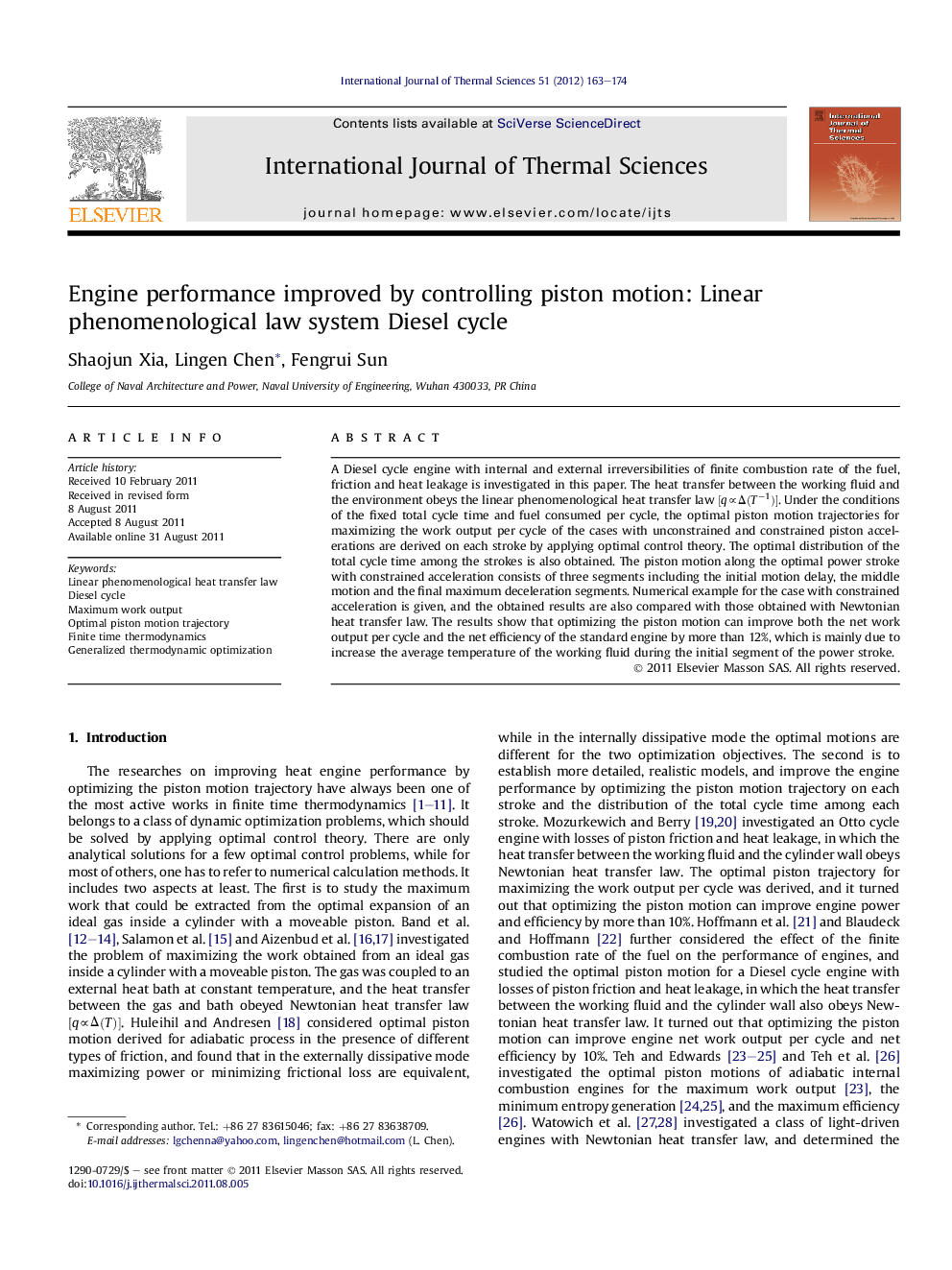| کد مقاله | کد نشریه | سال انتشار | مقاله انگلیسی | نسخه تمام متن |
|---|---|---|---|---|
| 668913 | 1458771 | 2012 | 12 صفحه PDF | دانلود رایگان |

A Diesel cycle engine with internal and external irreversibilities of finite combustion rate of the fuel, friction and heat leakage is investigated in this paper. The heat transfer between the working fluid and the environment obeys the linear phenomenological heat transfer law [q∝Δ(T−1)][q∝Δ(T−1)]. Under the conditions of the fixed total cycle time and fuel consumed per cycle, the optimal piston motion trajectories for maximizing the work output per cycle of the cases with unconstrained and constrained piston accelerations are derived on each stroke by applying optimal control theory. The optimal distribution of the total cycle time among the strokes is also obtained. The piston motion along the optimal power stroke with constrained acceleration consists of three segments including the initial motion delay, the middle motion and the final maximum deceleration segments. Numerical example for the case with constrained acceleration is given, and the obtained results are also compared with those obtained with Newtonian heat transfer law. The results show that optimizing the piston motion can improve both the net work output per cycle and the net efficiency of the standard engine by more than 12%, which is mainly due to increase the average temperature of the working fluid during the initial segment of the power stroke.
► An irreversible Diesel cycle engine model is investigated.
► Irreversibilities include finite combustion rate of fuel, friction and heat leakage.
► Heat leakage obeys linear phenomenological heat transfer law.
► Optimal piston motion trajectories are derived by applying optimal control theory.
► Maximum work output per cycle is taken as objective.
Journal: International Journal of Thermal Sciences - Volume 51, January 2012, Pages 163–174